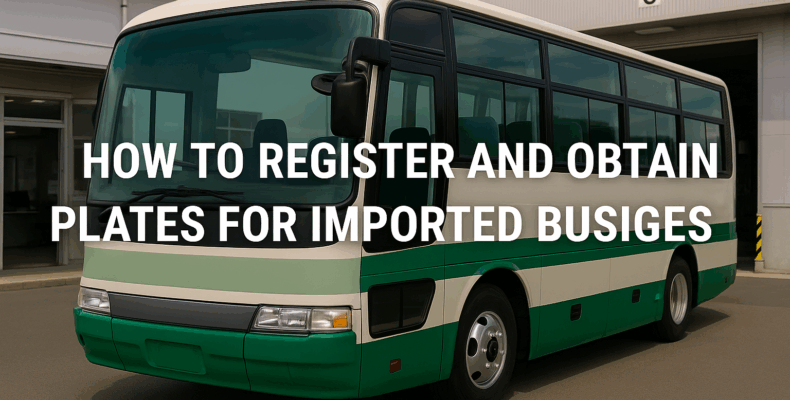Importing a Japanese bus can be a smart and cost-effective choice. Whether you’re buying for school transport, tourism, or city commuting, Japanese buses offer exceptional durability, low mileage, and high fuel efficiency. However, once your vehicle arrives in your country, the next critical step is registering the bus and obtaining license plates. Without this step, you won’t be able to legally drive it on public roads.
In this guide, we explain how to register your imported bus, what documents you’ll need, and how to make the process smooth. We’ve also included a helpful link to trusted exporters to get you started with the right vehicle.
🌍 Why Japanese Buses Are in High Demand Worldwide
Across Africa, the Caribbean, Southeast Asia, and beyond, Japanese buses are repurposed into:
-
School shuttles
-
Tourism and safari vehicles
-
Public minibuses
-
Church and community vans
Japanese buses are known for their fuel economy, compact design, and ease of maintenance. With automatic doors and barrier-free features becoming more common, these vehicles are ideal for inclusive transportation.
📝 Step-by-Step: How to Register Your Imported Bus
Here’s how you can successfully register your Japanese imported bus:
1. Customs Clearance
Before anything else, make sure your bus has cleared customs. Most countries require you to present:
-
Import declaration documents
-
Original invoice and bill of lading
-
Export certificate (from Japan)
-
Vehicle inspection certificates (if any)
2. Vehicle Inspection (Local)
Next, many countries will require a local inspection. This usually checks for:
-
Roadworthiness
-
Emissions compliance
-
Safety equipment (seatbelts, emergency exits, etc.)
Some countries require conversion from right-hand drive to left-hand drive, depending on local regulations.
3. Tax and Import Duty Payments
You’ll need to pay any import duties, VAT, or registration taxes applicable in your country. Keep the receipts, as these will be required in the next steps.
4. Submit to Licensing Authority
After passing inspection and paying all duties:
-
Submit your paperwork to the local vehicle licensing authority
-
Provide proof of identity and address
-
Show your payment receipts and inspection reports
-
Choose the bus usage category (private, commercial, school, etc.)
5. Receive Number Plates and Registration
Once approved, you’ll receive:
-
Vehicle registration document
-
Number plate(s)
-
Road tax sticker (in some countries)
Now your bus is ready for the road!
✅ Tips to Make the Process Easier
-
Work with a customs broker or local registration agent
-
Translate Japanese documents if your local office requires it
-
If converting the bus for a new use (e.g., tourism), check zoning or commercial vehicle rules
🔗 Where to Buy High-Quality Japanese Buses
Choosing the right exporter is key. Only buy from licensed and experienced companies who provide full documentation and condition reports. Here are five of the most trusted Japanese exporters for global buyers:
👉 Top 5 Trusted Japanese Used Truck Exporters for Global Buyers
These companies, all based in Japan, are known for:
-
Fast, safe international shipping
-
Full inspection reports
-
Excellent customer support
-
High-quality stock updated regularly
Whether you’re buying a Toyota Coaster, Nissan Civilian, or Mitsubishi Rosa, these exporters can help you find the right model at the right price.
🌟 Final Thoughts
Importing a Japanese bus is just the beginning. With the right steps, you can register your vehicle smoothly and start using it for business, education, or tourism. Thanks to reliable exporters and a clear process, owning a quality Japanese bus has never been easier.
